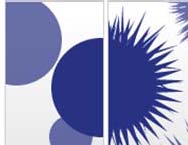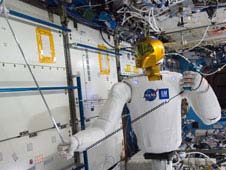Characterising a unique pressure sensitive material for use in mobile phones: Peratech Ltd (Peratech)
Submitting Institution
University of DurhamUnit of Assessment
PhysicsSummary Impact Type
TechnologicalResearch Subject Area(s)
Chemical Sciences: Macromolecular and Materials Chemistry, Physical Chemistry (incl. Structural)
Engineering: Materials Engineering
Summary of the impact
Collaborative research between Durham Physics and Industry showed that a
serendipitously discovered new material had unique, pressure sensitive
conduction properties which were derived from quantum tunnelling. This
research, published in 2005, is cited as one of the top 25 papers in that
Journal for that year. Peratech was set up to commercialise this material
for applications including switches and mobile phones as the pressure
sensitivity gives a new dimension to scale the response. This company now
employs 25 people, has an annual turnover of £3M and won the 2012 Queens
award for Enterprise in the innovation category.
Underpinning research
In 1996 Mr. David Lussey approached Prof. David Bloor (Durham University
Physics 1989- 2002) via Knowledge House, which provided an interface
between academia and industry in the North East. Mr Lussey, working as an
independent technologist on a security contract, was trying to make a
conducting adhesive for an anti-theft device. He mixed nickel powder with
clear silicone (bathroom sealant); it was insulating but became conductive
under applied pressure. Pressure sensitivity opens a whole new dimension
in the human-machine interface, as the resistance depends on the applied
force e.g for games consoles in gauging the level of response. Mr Lussey
founded a company, Peratech, to commercialise this material, but wanted a
fundamental understanding of the origin of its unusual behaviour.
Collaborative research between Bloor and Lussey at Durham showed that the
material changed gradually from an electrical insulator to a metal-like
conductor over a large range in applied pressure. This provided the key
results for the patent on the material [1], and is in strong contrast with
the behaviour of conventional composites which switch from insulator to
conductor over a very small range. The conventional composites consist of
spherical conducting particles (either metals or carbon) embedded in a
polymer, and contact between the particles is required in order to create
a conduction path. Hence the material is either an insulator when the
particles are not in contact, or a conductor when they are. The very
different behaviour of the new material led Peratech to sponsor a CASE PhD
studentship (Hands) in Durham Physics Department to better understand the
structure which gave rise to this behaviour. The key research breakthrough
came when a sample was taken to the Scanning Electron Microscope in
Durham. These pictures revealed that the Nickel particles were spiky
rather than smooth, immediately pinpointing the origin of the unique
conduction properties as electric field enhanced Quantum Tunnelling. With
no applied pressure, the Nickel particles were separated from each other
by the silicone rubber, so the material was an insulator. Under pressure
the particles get closer but do not touch as they are completely covered
(wetted) by the silicone. In `normal' quantum tunnelling applications, the
particles have to be nanometers apart for the tunnelling current to be
detectable. However, the spikes on the Nickel surface allow a large
electric field to build up at their tips (Fig 1). This decreases the
effective width of the potential barrier in quantum tunnelling, thus
increasing the distance at which the quantum tunnelling current can be
detected to 20-30nm. The current increases as the particles are forced
closer together, giving a very sensitive dependence on the applied
pressure. The unique properties of this Quantum Tunnelling Composite (QTC)
were outlined in a paper by Bloor et al 2005 [2] in the Journal of Applied
Physics, which was selected as one of the top 25 research papers in this
Journal for this year
 Fig 1: Comparison of shapes of conventional composite (left)
and
QTC (right)
Fig 1: Comparison of shapes of conventional composite (left)
and
QTC (right)
More details of the material were published in [3], and its application
to vapour sensing in [4-5]. This also opened up a new field of design of
other composite materials whose conduction properties are controlled by
quantum tunnelling [6]. These provide pressure sensitivity in touch
sensitive device including screens, keyboards, controls and switches
giving an extra dimension to the response compared to current touch
sensitive screens which only detect position.
References to the research
1. Granted patent: D. Lussey, Peratech Ltd., UK Patent, PCT/GB98/00206
(WO 98/33193).
The quality of the underpinning research is evidenced by the fact that
[2] was selected as being one of the top 25 papers published in the
Journal for that year. It has 119 citations.
Details of the impact
The research by Prof Bloor was key to the initial patenting and has
continued to provide the company with academic support for its claims,
thereby strengthening its' position to negotiate start- up finance and
attract potential customers. Mr Lussey, in an web interview, says `That
University connection started Peratech' [C1].
Peratech first used the QTC coating for textile switches and sensors, but
it became apparent that an ink version of QTC would have great potential
as ink printing is a much more efficient and hence cheaper way to make
structures coated with the material. Mr Lussey was able to make a pressure
sensitive ink from a standard ink base but with semiconductor coated
Titanium dioxide particles rather than Nickel as the QTC particles.
However, he could not develop this further without a basic understanding
of its properties. Dr Del Atkinson at Durham worked on the
micro-morphology of the ink, again using the scanning electron microscopy
facilities in Durham to show the structural properties of the new
material. Here the key aspect was that the nanoparticles were needle-like
rods, so the electric field enhanced quantum tunnelling occurred between
the tips of the rods, again giving the strong dependence of conductivity
on applied pressure [6]. This opaque QTC ink coating is now the subject of
licence agreements with major international companies e.g. Nissha
printing, one of the worlds' largest manufacturer of touch screen
technology. Nissha signed a $1.4M licence agreement with Peratech to use
QTC technology to create the next generation of touch screens with 3D
input (x,y position and pressure) for mobile phones and portable
electronic devices. The licensing agreement gives Nissha exclusive
worldwide rights to use the technology for screens smaller than 3.5 inches
by 5.5 inches for an initial period of one year [C2]. This success
attracted £1.1M funding from YFM, a company which invests in SMEs across
the UK [C3].
The opacity of the standard QTC ink means it has to be printed underneath
the screen, with backplane electronics behind this to detect position and
pressure. Peratech initially used commercial solutions for these
electronics, but now has its own design office in Korea which produces
electrode and backplane designs as well as firmware and software
especially for QTC. Peratech has used these facilities to develop its own
customised touch processing unit [C4].
However, the focus of recent development work has been instead to design
a transparent QTC ink which can be printed on the front of a screen. This
is much simpler to incorporate in the manufacturing process, as it means
that the printing is directly onto the flat screen substrate [C5]. New
readout electronics designs for transparent multi-touch sensors are being
developed that span the entire screen, giving full pressure sensing at all
positions simultaneously. Peratech is now working with the Centre for
Process Innovation (CPI) Plastic Electronics Technology Center on NETPark
to explore printing QTC screens, sensors and switches using standard
printing machines. This gives a major reduction in production costs
compared to the previous approach where Peratech used a screen-printing
process. The project will also allow the integration of QTC devices with
other forms of printable electronics. This joint project is supported by
government funding from the Technology Strategy Board [C6].
While the market for pressure sensitive inks is very large, there are
also smaller niche markets for more general pressure sensitive materials.
The properties of the QTC™ material means that it can detect multiple
gestures and functions, responding instantly to contact in a similar way
to human skin. This has applications in robotics, with Peratech
commissioned by NASA to build the hand/glove sensor for Robonaut, a
humanoid robot to work in space alongside astronauts [C7]. Later versions
flew to the ISS on STS-133 in 2011 (Fig 2), and the work resulted in
Peratech being given one of NASAs Tech Brief awards in 2012 [C8]. Peratech
also had a joint project with MIT (commissioned in 2010) to develop
technology by which people can interact tactilely with a robot in much the
same way as they would with another human (see Fig 3, C9).
 Fig 2: Robonaut 2 – the first dexterous humanoid robot in
space – is pictured on ISS. Credit NASA
Fig 2: Robonaut 2 – the first dexterous humanoid robot in
space – is pictured on ISS. Credit NASA
 Fig 3:Tactile human-machine interface with QTC skin developed
for robotics with NASA and MIT
Fig 3:Tactile human-machine interface with QTC skin developed
for robotics with NASA and MIT
An acknowledgement of the impact of this work is that Peratech won the
2012 Queen's Award for Enterprise in the Innovation Category for QTC. The
citation says that "the new materials have spawned an extensive range of
highly-reliable solid state sensors and switches. The innovation has
facilitated the development of light-weight, low-power, portable devices
with three-dimensional input features." This is the UK's most prestigious
award for business performance and recognises and rewards outstanding
achievement by British companies [C10]. This joins several other awards
such as 2011 British Engineering excellence award, 2011 Growing Business
award, 2011 Printed Electonics award. Mr Lussey recently won `AV
technologist of the year 2013', an award which recognises outstanding
achievement by an individual in advancing AV technology [C11].
The company holds 100+ worldwide patents [C12], employs 25 people, and
has increased turnover dramatically over the REF period, reaching
~£3M per annum in 2012 (see Fig 4).
![Fig 4. Annual turnover of Peratech from 1998 to 2012, showing how the company has
expanded since 2008 (courtesy D Lussey [C13]) Fig 4. Annual turnover of Peratech from 1998 to 2012, showing how the company has
expanded since 2008 (courtesy D Lussey [C13])](getImage.aspx?ID=36) Fig 4. Annual turnover of Peratech from 1998 to 2012, showing
how the company has
expanded since 2008 (courtesy D Lussey [C13])
Fig 4. Annual turnover of Peratech from 1998 to 2012, showing
how the company has
expanded since 2008 (courtesy D Lussey [C13])
Sources to corroborate the impact
C1 David Lussey Interview for Innomatnet Project (video filed with
supporting evidence)
http://vimeo.com/56006577
C2 Nissha licence
http://peratech.com/nissha.html
C3 YFM funding
http://peratech.com/yfm-group.html
C4 touch processing unit
http://www.peratech.com/qtc-touch-processing-unit.html
C5 QTC clear (transparent ink)
http://www.peratech.com/qtc-clear-screenprint-ink.html
C6 Peratech — PETeC joint project for printing QTC clear and electronics
together
http://www.uk-cpi.com/news/peratech-working-on-new-ink-formulations-with-cpi/
C7 QTC for touch sensitivity on NASA Robonaut hand, T.B. Martin et al,
NASA Tech. Briefs 28, No. 10, 29 (2004) also published in 2004
IEEE International conference on automation and robotics
http://www-robotics.cs.umass.edu/Papers/icra04_martin.pdf
C8 Peratech NASA tech brief award
http://www.peratech.com/nasa-robonaut.html
C9 Peratech MIT robotics contract
http://www.peratech.com/mit.html
C10 Queens award 2012
http://www.peratech.com/queens-award.html
C11 Mr Lussey wins AV News Technologist of the year
http://www.peratech.com/av-news-awards-2013.html
C12 Patent list
http://www.peratech.com/patents-and-science-papers.html
C13 Peratech company turnover
Filed with evidence